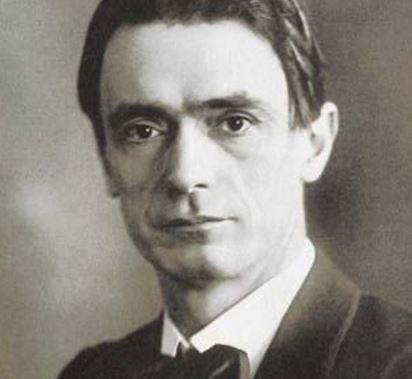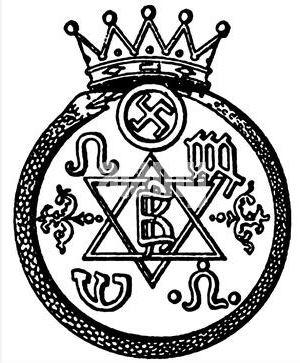Rudolf Steiner: Pioneering Anthroposophist and Innovator
Rudolf Steiner was a philosopher, social reformer, and founder of Anthroposophy, a spiritual movement that seeks to understand the human experience through a holistic lens.
Steiner's work has had a profound impact on various fields, including education, agriculture, and the arts. His philosophy emphasizes the importance of integrating spiritual and practical aspects of life.

As the founder of Anthroposophy, Steiner introduced new approaches to understanding human consciousness and the natural world. His ideas continue to inspire innovation and reform.
Key Takeaways
- Anthroposophy is a spiritual movement founded by Rudolf Steiner.
- Steiner's philosophy integrates spiritual and practical aspects of life.
- His work has influenced various fields, including education and agriculture.
- Anthroposophy emphasizes a holistic understanding of human experience.
- Steiner's ideas continue to inspire innovation and reform.
The Early Life and Education of Rudolf Steiner
In the rural landscape of the Austrian-Hungarian Empire, a young Rudolf Steiner grew, surrounded by the influences that would later shape his anthroposophy. The natural beauty and cultural heritage of this region had a profound impact on Steiner's early development.
Childhood in the Austrian-Hungarian Empire (1861-1879)
Steiner was born on February 27, 1861, in Kraljevec, a small village in what is now Croatia. His early years were spent in a rural environment that fostered his curiosity about the natural world. The experiences of his childhood laid the foundation for his later philosophical and spiritual explorations.
Academic Studies and Scientific Foundations
Steiner's academic pursuits began with studies in mathematics and science. He later attended the Technical University in Vienna, where he deepened his understanding of scientific principles. His engagement with scientific inquiry during this period significantly influenced his philosophical development.
Work with Goethe's Scientific Writings
A pivotal aspect of Steiner's academic work was his engagement with Goethe's scientific writings. Editing Goethe's scientific works for publication, Steiner developed a profound appreciation for Goethe's holistic approach to understanding nature. This work not only honed his critical thinking skills but also instilled in him a deep respect for the interconnectedness of all phenomena, a theme that would recur in his later philosophical works.
Steiner's early life and education thus set the stage for his contributions to spiritual philosophy and educational reform. His background in science and his work with Goethe's writings prepared him to synthesize spiritual insight with scientific rigor.
The Philosophical Development of Rudolf Steiner
Steiner's philosophical thoughts evolved significantly over the years, shaped by his interactions with various spiritual and philosophical traditions. His early work was characterized by a deep engagement with the scientific and philosophical ideas of his time.
Early Philosophical Works and Doctoral Thesis
Steiner's academic pursuits began with a focus on philosophy and science. His doctoral thesis, submitted to the University of Rostock, was an examination of Truth and Knowledge, reflecting his interest in epistemology. This work laid the groundwork for his later philosophical explorations, demonstrating his ability to synthesize complex ideas.
Steiner's early philosophical works were influenced by the German philosophical tradition, particularly the ideas of Kant and Goethe. His writings during this period showcased his capacity for critical thinking and his desire to understand the human experience.
Engagement with Theosophy (1902-1912)
In the early 20th century, Steiner became involved with the Theosophical Society, a spiritual organization that sought to explore the mysteries of nature and the human condition. During his engagement with Theosophy, Steiner delivered numerous lectures and wrote extensively on spiritual themes, gradually developing his own unique spiritual perspective.
Steiner's involvement with Theosophy lasted for about a decade, during which he held significant positions within the society. However, he eventually began to diverge from Theosophical teachings, paving the way for his own spiritual movement.
Transition to Independent Spiritual Research
The transition marked a significant turning point in Steiner's career, as he began to articulate his own spiritual science, which he termed Anthroposophy. This new path was characterized by a deeper exploration of the spiritual dimensions of human existence and the natural world.
| Period | Key Developments | Influences |
|---|---|---|
| Early Works | Philosophical writings, doctoral thesis | Kant, Goethe |
| Theosophical Engagement | Lectures on spirituality, Theosophical writings | Theosophical Society |
| Independent Research | Development of Anthroposophy | Goethe's scientific works |
Steiner's philosophical development was a gradual process, influenced by various traditions and his own spiritual explorations. His transition to independent spiritual research laid the foundation for Anthroposophy, a spiritual science that continues to influence contemporary thought.
https://www.youtube.com/watch?v=2CF3pwmkMCg
The Birth of Anthroposophy: Steiner's Spiritual Science
The dawn of the 20th century saw the birth of Anthroposophy, a spiritual science pioneered by Rudolf Steiner that sought to integrate spiritual insight with scientific inquiry. This movement was not merely a philosophical construct but a living, breathing approach to understanding humanity and the universe.
Core Principles and Cosmology of Anthroposophy
At its core, Anthroposophy posits that the human experience is not limited to the physical realm but encompasses spiritual dimensions. Steiner's cosmology emphasized the interconnectedness of all things, suggesting that human beings have the capacity to access and understand spiritual realities through inner development and spiritual practice.
Steiner's work in Anthroposophy was characterized by a deep respect for the mysteries of existence and a commitment to exploring the human condition in all its complexity. As he noted, "The anthroposophical movement is not a sectarian organization, but a school of spiritual perception." This approach encouraged individuals to engage in their own spiritual journey, fostering a sense of community and shared purpose.
"The anthroposophical movement is not a sectarian organization, but a school of spiritual perception." - Rudolf Steiner
The Founding of the Anthroposophical Society (1913)
In 1913, Steiner founded the Anthroposophical Society, an organization dedicated to the exploration and application of Anthroposophical principles. This society provided a formal structure for the burgeoning movement, facilitating the dissemination of Steiner's teachings and the development of various Anthroposophical initiatives.
| Year | Event | Significance |
|---|---|---|
| 1913 | Founding of the Anthroposophical Society | Formalized the Anthroposophical movement, providing a structure for its growth. |
| 1924 | Agriculture Course | Laid the groundwork for biodynamic agriculture, a holistic approach to farming. |
The Goetheanum: Architectural Expression of Anthroposophy
The Goetheanum, designed by Steiner and located in Dornach, Switzerland, stands as a testament to the architectural expression of Anthroposophy. This building, with its unique design and spiritual significance, serves as a center for Anthroposophical activities and a symbol of the movement's ideals.
The Goetheanum represents more than just an architectural achievement; it embodies the Anthroposophical ideals of unity, creativity, and spiritual exploration. Through its design, Steiner aimed to create a space that would facilitate spiritual growth and foster a sense of community among those drawn to Anthroposophy.
Waldorf Education: A Child-Centered Approach to Learning
Rudolf Steiner's vision for a child-centered approach to learning led to the creation of Waldorf Education. This educational philosophy focuses on developing the whole child: intellectually, artistically, and practically.
Origins and Philosophy
The first Waldorf School was established in 1919 in Stuttgart, Germany, for the children of workers at the Waldorf-Astoria cigarette factory. Steiner's approach was revolutionary, emphasizing creative expression, hands-on learning, and social responsibility. As Steiner noted, "The teacher's task is not to talk about things, but to awaken the student's interest in the subject."

Key Elements of the Curriculum
Waldorf Education is characterized by its unique curriculum, which integrates artistic activities, practical skills, and intellectual pursuits. The curriculum is designed to foster creativity, critical thinking, and social-emotional learning. Key elements include:
- Integrated curriculum that combines subjects like math, science, and language arts
- Emphasis on artistic expression through music, movement, and crafts
- Hands-on learning experiences
Global Growth and Impact
Today, there are over 1,000 Waldorf Schools worldwide, making it one of the largest independent school movements globally. Waldorf Education has been recognized for its innovative approaches to teaching and learning, and its emphasis on social-emotional development. As one educator noted, "Waldorf Education is not just a method of teaching; it's a way of cultivating the human being."
The global growth of Steiner Schools is a testament to the enduring legacy of Rudolf Steiner's educational philosophy. By focusing on the whole child and fostering a love of learning, Waldorf Education continues to inspire educators and parents around the world.
Biodynamic Agriculture: Pioneering Organic Farming Methods
In 1924, Rudolf Steiner introduced biodynamic agriculture, a method that integrates spiritual and ecological principles. This approach to farming is based on Steiner's philosophy of anthroposophy, which views the farm as a living organism.
The Agriculture Course of 1924
Steiner's Agriculture Course, a series of eight lectures, provided the foundational principles for biodynamic farming. These lectures emphasized the importance of soil quality, crop rotation, and the use of natural preparations to enhance soil fertility.
Principles and Practices of Biodynamic Farming
Biodynamic farming is characterized by several key practices, including:
- Crop rotation and diversification to promote soil health and biodiversity.
- The use of compost and natural preparations to enhance soil fertility.
- A lunar calendar to plan planting and harvesting.
- Integration of livestock into the farming system.
Contemporary Applications and Certification
Today, biodynamic farming is practiced worldwide, with many farms achieving certification through organizations like Demeter International. This certification ensures that farms adhere to strict biodynamic principles, promoting ecological sustainability and high-quality produce.
Anthroposophical Medicine and Therapeutic Approaches
Anthroposophical medicine, rooted in Steiner's spiritual science, offers a unique perspective on human health and wellness. This approach to healthcare integrates the physical, spiritual, and soul aspects of the human being, providing a holistic framework for understanding and treating illness.

Steiner's Holistic View of Human Health
Steiner's philosophy views human health as a dynamic interplay between the physical body, the soul, and the spiritual dimensions. Anthroposophical medicine seeks to restore balance and harmony among these elements, rather than merely treating symptoms. This holistic perspective encourages a more comprehensive understanding of health and disease.
Development of Anthroposophical Remedies and Treatments
The development of anthroposophical remedies and treatments is based on Steiner's indications and insights from his spiritual research. These remedies, often derived from natural sources such as plants and minerals, are designed to stimulate the body's inherent healing capacities. Anthroposophical medicine encompasses a range of therapies, including medicinal products, art therapy, and rhythmic massage.
Modern Integrative Medical Applications
Today, anthroposophical medicine is practiced alongside conventional medicine in many parts of the world. It is used to complement standard treatments, offering patients a more holistic approach to their care. Integrative medical applications of anthroposophical principles can be seen in various clinical settings, from oncology to pediatrics, enhancing patient care through a more comprehensive understanding of health.
By integrating anthroposophical medicine into mainstream healthcare, practitioners can offer patients a broader range of therapeutic options, potentially improving outcomes and quality of life. As the healthcare landscape continues to evolve, the principles of anthroposophical medicine remain relevant, offering a valuable complement to conventional medical practices.
Rudolf Steiner's Literary Works and Lectures
As a prolific author and speaker, Rudolf Steiner left behind a rich legacy of written works and lectures that continue to inspire and educate. His contributions to literature are a testament to his profound impact on modern spiritual thought and the anthroposophical movement.
Major Published Books and Written Works
Rudolf Steiner authored numerous books that form the core of his philosophical and spiritual teachings. Some of his most influential works include "The Philosophy of Freedom," "Theosophy: An Introduction to the Spiritual Processes in Human Life and in the Cosmos," and "An Outline of Occult Science." These texts provide insights into Steiner's philosophy and the principles of anthroposophy, offering readers a deeper understanding of his spiritual science.
The Collected Lectures (Over 6,000 Lectures)
In addition to his written works, Steiner was a gifted orator who delivered over 6,000 lectures during his lifetime. These lectures, which covered a wide range of topics from spirituality and education to social reform and the arts, have been compiled and preserved for posterity. They offer a unique glimpse into Steiner's ability to communicate complex ideas in an engaging and accessible manner.
Translations and Contemporary Editions
The enduring popularity of Steiner's works is reflected in the numerous translations and contemporary editions of his books and lectures. His writings have been translated into many languages, making his philosophy and teachings accessible to a global audience. The ongoing publication of new editions ensures that Steiner's insights remain relevant, continuing to inspire new generations of readers and practitioners of anthroposophy.
Steiner's literary legacy is a vital component of his anthroposophical teachings, providing a foundation for understanding his broader philosophical and spiritual contributions. Through his books and lectures, Rudolf Steiner continues to influence contemporary thought and practice in areas ranging from education and agriculture to medicine and the arts.
Social and Artistic Contributions
Rudolf Steiner's impact extended far beyond spirituality, influencing various artistic and social domains. His innovative ideas and practices continue to shape contemporary art, education, and social reform.
Eurythmy: The Art of Movement
Eurythmy, developed by Steiner, is a form of expressive movement that interprets and conveys the emotional and spiritual content of poetry, music, and speech. This art form is based on the idea that movement can be a powerful medium for conveying the deeper aspects of human experience. "Eurythmy brings the invisible to visibility," Steiner once said, encapsulating the essence of this unique art form.
The Threefold Social Order
Steiner's concept of the Threefold Social Order represents a vision for a society where economic, political, and cultural/spiritual life are given independence and allowed to flourish in harmony. This idea advocates for a more balanced and equitable social structure. As Steiner noted,
"The threefold order is not a rigid structure, but a living, dynamic process."
Influences on Art, Drama, and Architecture
Steiner's influence on art, drama, and architecture is evident in the numerous works inspired by his ideas. The Goetheanum, designed by Steiner, is a testament to his architectural innovation, combining functionality with spiritual expression. His work continues to inspire artists and architects worldwide.
Steiner's legacy in the arts is a testament to the enduring power of his ideas. By integrating spirituality with creative expression, he opened new avenues for artistic exploration and social reform.
Conclusion: The Enduring Legacy of Rudolf Steiner
Rudolf Steiner's pioneering work in Anthroposophy has left an indelible mark on various aspects of modern life, from education and agriculture to medicine and the arts. Through his philosophy, Steiner aimed to integrate spiritual science into everyday practices, fostering a more holistic understanding of the world.
The Waldorf education system, founded on Steiner's principles, continues to inspire child-centered learning approaches globally. Similarly, biodynamic agriculture, another of Steiner's innovations, promotes sustainable farming practices that prioritize ecological balance.
Steiner's influence extends beyond education and agriculture. His anthroposophical medical approach has contributed to the development of integrative healthcare practices, while his artistic and social endeavors have enriched cultural landscapes.
As we reflect on Steiner's legacy, it becomes clear that his work remains remarkably relevant today. By embracing the principles of Anthroposophy and Steiner philosophy, individuals can cultivate a deeper understanding of themselves and the world around them, leading to a more compassionate and sustainable future.
FAQ
What is Anthroposophy?
Anthroposophy is a spiritual science developed by Rudolf Steiner, focusing on the nature of humanity and the universe. It encompasses various aspects, including philosophy, education, agriculture, and medicine, aiming to integrate spiritual insight into everyday life.
What is the significance of the Goetheanum?
The Goetheanum is a central architectural expression of Anthroposophy, serving as the global headquarters of the Anthroposophical Society. It represents Steiner's vision for a spiritual and cultural center, embodying the principles of Anthroposophy through its design and function.
What is Waldorf Education?
Waldorf Education is a child-centered educational approach developed by Rudolf Steiner, emphasizing creative and holistic learning. It focuses on the development of the whole child, integrating artistic, practical, and intellectual elements into the curriculum.
What is Biodynamic Farming?
Biodynamic farming is an organic farming method developed by Rudolf Steiner, considering the ecological, spiritual, and social dimensions of agriculture. It involves practices such as using compost and preparing special field sprays to enhance soil fertility and crop quality.
How does Anthroposophical Medicine differ from conventional medicine?
Anthroposophical Medicine is a complementary approach to healthcare, integrating spiritual and holistic principles into medical practice. It involves the use of natural remedies, such as plant-based medicines, and therapies like massage and art therapy, to promote health and well-being.
What is Eurythmy?
Eurythmy is a form of expressive movement developed by Rudolf Steiner, combining elements of dance, theater, and music. It is used as a therapeutic and artistic practice, aiming to cultivate inner awareness and balance.
What is the Threefold Social Order?
The Threefold Social Order is a social philosophy developed by Rudolf Steiner, advocating for a society structured around three autonomous spheres: the economic, the political, and the cultural. It aims to promote social renewal and justice through the balance and interplay of these spheres.
Where can I find Rudolf Steiner's books and lectures?
Rudolf Steiner's literary works and lectures are widely available in various formats, including print, digital, and audio. Many of his books and lectures have been translated into multiple languages and can be found through online retailers, libraries, and Anthroposophical Society publications.
How can I learn more about Steiner Schools?
To learn more about Steiner Schools, you can visit the websites of individual schools, explore the Association of Waldorf Schools of North America, or look into the International Waldorf Education Conference for global information and resources.
What is the Anthroposophical Society?
The Anthroposophical Society is an organization founded by Rudolf Steiner to promote and develop the principles of Anthroposophy. It serves as a global network for individuals and groups working with Steiner's ideas, supporting research, education, and community activities.
Links:
Free Reading: Tarot, Astrology and Numerology!


